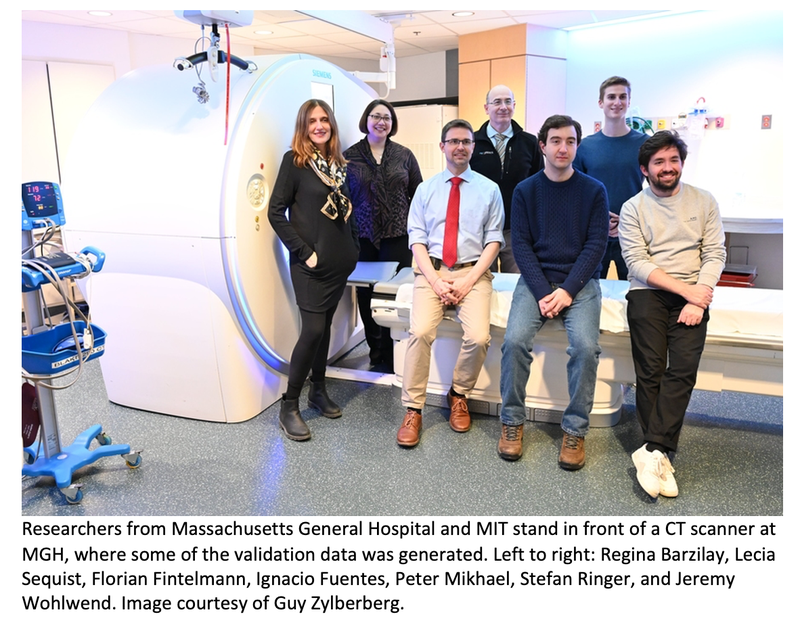
- Women who do not smoke are at a greater risk of lung cancer than male non-smokers.
- Sex hormones may mediate these gender disparities in lung cancer incidence, but the evidence showing an association between sex hormone-related reproductive factors and lung cancer risk has been contradictory.
- A large study involving more than 273,000 women, however, did find an association between reproductive factors, such as age at menopause and first childbirth, and lung cancer risk.
- Experts say the study underscores the importance of considering reproductive factors while screening for lung cancer.
While smoking is a risk factor for lung cancer, women are at a higher riskTrusted Source of lung cancer incidence than men after accounting for smoking status.
Scientists say that hormones may contribute to these sex differences in susceptibility to lung cancer.
However, evidence supporting a role for factors associated with reproductive health, especially those involving changes in sex hormone levels, in the causation of lung cancer has been inconsistent in the past.
Now, researchers who conducted a large study published in the journal Chest report that reproductive factors, such as early age at menopause and first childbirth, are associated with an increased risk of lung cancer.
Dr. Wael Harb, a hematologist and medical oncologist at MemorialCare Cancer Institute at Orange Coast and Saddleback Medical Centers in California who was not involved in the study, told Medical News Today that these findings could help improve lung cancer screening.
“Identifying reproductive factors that may contribute to lung cancer risk in women could lead to early interventions or screening strategies tailored to this population,” Harb said. “This has the potential to reduce the burden of lung cancer among women.”
“This research adds to the existing body of knowledge by providing insights into the complex relationship between reproductive factors and lung cancer, potentially paving the way for further investigations and advancements in the field,” he added.
Sex differences in lung cancer incidence
Smoking is a risk factor for all lung cancers, but women show an increased susceptibility to lung cancer even after adjusting the data for smoke exposure.
Numerous studies in the past have examined the association between sex-specific reproductive factors and lung cancer risk to understand the basis of the higher incidence of lung cancer in women.
Specifically, these studies have examined the potential role of reproductive factors, such as age at the onset of menstruation (menarche), age at menopause, and the use of hormone replacement therapy and oral contraceptives, in influencing lung cancer risk. These reproductive factors influence the length and duration of exposure to sex hormones, such as estrogen and progesterone.
Experts note that one of the shortcomings of past studies is their small sample size. Moreover, these studies have involved different study populations or deployed different study designs, precluding the possibility of drawing meaningful conclusions.
Impact of reproductive factors on lung cancer risk
In the present study, researchers from China used data from the UK Biobank, a large database containing medical, genetic, and lifestyle information from more than half a million United Kingdom residents.
Using the database, the researchers analyzed health and genetic data obtained from 273,190 women between 2006 and 2010.
The researchers obtained self-reported data from these participants on reproductive factors, including age at menarche (first menstrual period) and menopause, use of hormone replacement therapy and oral contraceptive pills, age at first live birth, and surgical removal of ovaries or the uterus.
The researchers also calculated reproductive lifespan by subtracting the age at menarche from that at menopause.
Menarche before 12 years of age was categorized as early menarche, whereas menopause before 47 years was classified as early menopause.
The researchers tracked the incidence of lung cancer in this group of women over an average follow-up period of 12 years. Upon analyzing the data, the researchers reported that participants who were older and were smoking at the end of the follow-up period were more likely to have lung cancer.
Women who had an earlier onset of menarche or menopause were also at increased risk of lung cancer. Women with a reproductive lifespan shorter than 36 years had a higher likelihood of lung cancer incidence than those with a normal reproductive lifespan of 36 to 39 years.
Surgical removal of the ovaries that produce the sex hormones estrogen and progesterone was also associated with elevated lung cancer incidence. Such an association was absent in women who had undergone a surgical removal of the uterus.
In addition, use of hormonal replacement therapy was associated with a greater likelihood of lung cancer. However, this association disappeared after adjusting for factors such as age, race, body-mass index, and smoking status.
Lastly, the risk of lung cancer was higher in women who had their first live birth before 26 years of age than those who had a firstborn between 26 and 30 years of age.
Together, experts say these results suggest a role for the disruption of sex hormone levels in mediating lung cancer.
In a follow-up analysis, the researchers examined whether these reproductive factors were associated with specific subtypes of lung cancer.
Partially consistent with previous studiesTrusted Source, the present research found that early age of menopause onset, shorter reproductive lifespan, and younger age at first childbirth was associated with the risk of non-small cell lung cancer, including adenocarcinomas. This association was more pronounced in women who were currently smoking or had a history of smoking.
Strengths and limitations of the lung cancer study
The strengths of the study included the large sample size and a long follow-up period of 12 years.
Harb also noted that the study adjusted their analysis for variables, such as smoking and environmental exposures, while examining the association between reproductive factors and lung cancer risk.
A shortcoming of the study included the use of self-reported data on reproductive factors, making it susceptible to bias. The study involved primarily women of European descent and the findings may not be generalizable to other populations.
Implications of the lung cancer research
Dr. Michael Gieske, the director of Lung Cancer Screening at St. Elizabeth Healthcare in California who wasn’t involved in the study, told Medical News Today that the findings could play an important role in risk assessment for lung cancer.
“We know that lung cancer is due to more than age and smoking history with many other risk factors in consideration,” Gieske said. “Accordingly, we are looking at genetic markers and other causes and predilections for lung cancer so that we will ultimately be able to save many more lives from lung cancer through expanded evidence-based screening.”
“AI algorithms incorporating risk factors… will be a growing part of the overall risk assessment for all types of cancer in the near future,” he added. “This science, along with improving biomarker capabilities will transform the way we approach cancer screening.”

